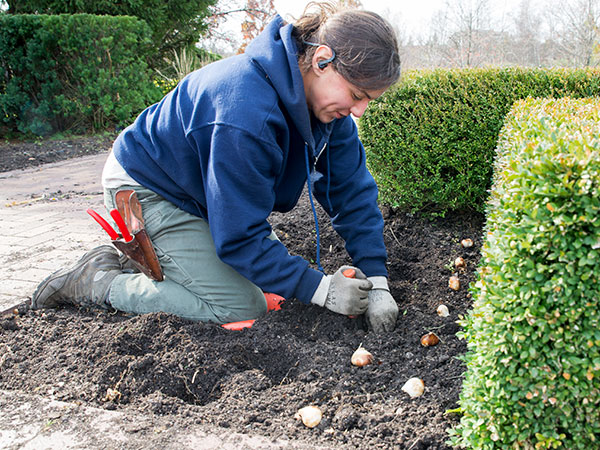
After a killing frost, remove annual plant material from your garden and add it to your compost heap.
Any soilless mix from window boxes or containers can be discarded or kept aside for one more year. If used for a second year, mix equal parts old mix with fresh soilless mix.
Clean and sterilize containers before storing over winter.
Do not mulch your perennial garden area until the ground has frozen hard later in November.
Begin to plant spring-blooming bulbs. Mulch area after planting. If rodents, deer, or rabbits have been a problem in the past, consider planting varieties of the following pest-resistant bulbs: ornamental onion, grape hyacinth, fritillary, narcissus, windflower, winter aconite.
A few weeks after a killing frost, lift and store tender bulbs. This might be as late as November. Cut back above-ground foliage and stems of cannas and dahlias to 4 to 5 inches. Gently lift up tubers using a pitchfork. Shake off excess soil and dry tubers in a warm dry place. Do not separate the mass of tuberous roots at this time. When dry, place labeled tubers in cardboard boxes lined with newspaper and filled with barely moist wood shavings, peat moss, or vermiculite. Store between 40 and 50 degrees in a darkened room. Check periodically to be sure tubers haven’t rotted (throw away) or begun to dry out (sprinkle gently with water).
Tuberous begonias can be dug in the same fashion. Remove all foliage and stems and place in a cardboard box lined with newspaper and filled with barely moist wood shavings, peat moss, or vermiculite. Store tubers in dark room between 45 and 55 degrees.
Caladium bulbs are lifted and stored like tuberous begonias.
Gladioli corms are dug, dried, and stored between 35 and 40 degrees in paper bags or open-weave mesh bags.
Tuberose planted in the garden should be dug up and have its foliage removed, then stored in a pot with very dry soil in a darkened warm room. Those planted in containers can be moved straight to storage after cutting back the darkened foliage and stems.
Winterize aquatic gardens. Hardy water plants may remain in ponds as long as they don’t freeze.
Protect small ponds from freezing by covering them with thin plywood sheets and layers of mulch or shredded leaves. Or install a pond heater to keep the water surface from freezing. If a thin layer of ice forms on the water surface, pour hot water on the ice to melt it. Banging on ice can hurt fish.
Remove tropical water plants, cut off all foliage and flowers, and store tubers in an indoor aquarium where the water remains 55 degrees or in moist sand in a bucket at 55 degrees.f hardware cloth tacked into the soil three inches away from the trunk.

